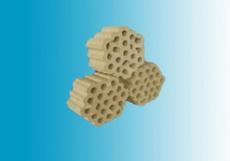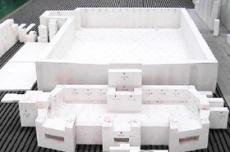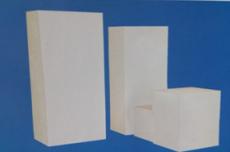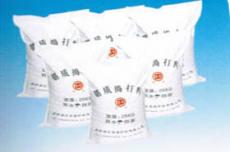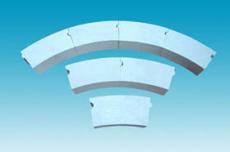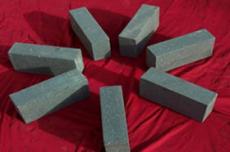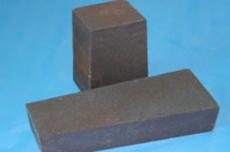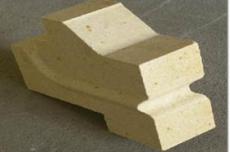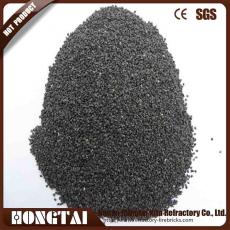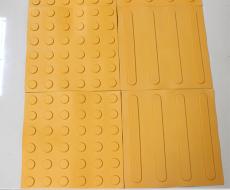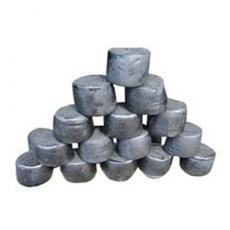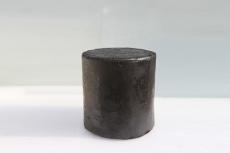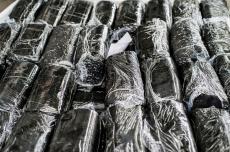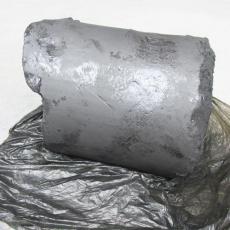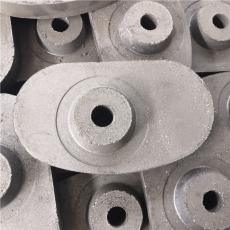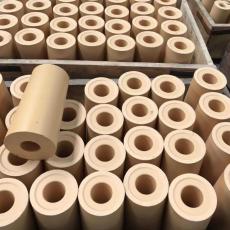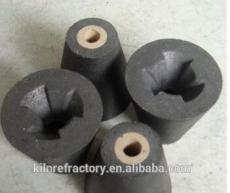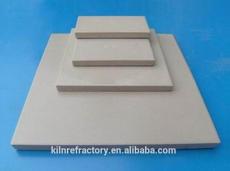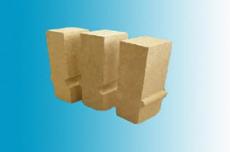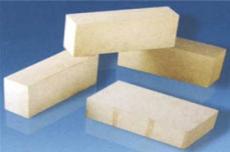
When refractory materials are used in glass kilns, they will be severely damaged due to the effects of high temperature, flame, material powder, atmosphere, air flow and liquid flow, which greatly affects the service life of the kiln. The use of refractory materials in the kiln begins with the baking kiln. Improper operation will also cause great or even serious damage to the refractory materials, so special attention is required. Several damage situations are described below.
PART.01 Glass furnace refractory material corrosion
Inside the glass furnace, material powder, glass liquid and flame gas all pose severe challenges to refractory materials.
First, we deeply explore the erosion mechanism of refractory materials caused by powder. Material powder will release alkaline vapor in high temperature environment, and these vapors are extremely corrosive to refractory materials. Taking silica bricks as an example, the surface may become uneven due to melting and erosion, and there may even be voids called "rat holes" inside. What’s more complicated is that ultra-fine powder will accumulate in the grid of the regenerator, forming “tumors” that hinder air flow. In severe cases, it will block the grid holes, leading to the collapse and damage of the grid bricks. It is worth noting that this erosion increases as the temperature increases. Generally, for every 50-60°C increase in melting temperature, the service life of the refractory material may be shortened by approximately one year. Many key parts such as the front wall of the kiln, the feeding port, and the front of the melting section are all threatened by the erosion of this kind of material powder.
Although molten glass is relatively less corrosive to refractory materials, the chemical reaction at its interface with refractory materials is extremely complex. The glass liquid will first dissolve the free SiO2 in the refractory material, followed by components such as mullite. This dissolution process will form a multi-layer structure between the refractory material and the glass liquid, including a mullite layer, a β-Al2O3 layer, etc. As the refractory material dissolves, the viscosity of the molten glass increases, forming a protective, difficult-to-move layer on the surface of the refractory material, which slows further erosion to a certain extent. However, the glass liquid with low viscosity and low surface tension may still penetrate into the refractory material and cause more serious damage. In particular, high-alkali glass and borosilicate glass have a more significant corrosion effect on refractory materials due to their special physical properties.
In addition, the corrosive components in the flame gas, such as SO2, V2O5, etc., cannot be ignored. These gases mainly come from the combustion products of coal gas and heavy oil, and they will corrode the refractory materials in the flame space, small furnace and regenerator. At the same time, chemical reactions may occur between different furnace construction materials in high-temperature environments, further aggravating the damage of refractory materials. For example, clay bricks and silica bricks will react violently at high temperatures, resulting in a decrease in material properties.
In regenerators, grids also face specific challenges with the redox atmosphere. Since the variable valence ions will undergo volume changes in the oxidation and reduction states, this may lead to a reduction in the strength of the product or even cracking, further affecting the service life of the refractory material and the overall performance of the kiln.
PART.02 Burning loss of glass furnace refractory materials
Under the long-term action of high-temperature environments, refractory materials in glass furnaces are susceptible to melting (also known as burn flow) or softening deformation, which can lead to damage. When there is local overheating in a certain area of the kiln, or the refractory resistance of the refractory materials used does not meet the requirements, the refractory materials will be melted. In addition, even if the refractory resistance of the refractory material meets the standards, if its load softening temperature is low, the material may still soften and deform during long-term use. This situation will have a negative impact on the stability of the entire masonry and shorten its service life.
The severity of burning damage is closely related to temperature and the properties of refractory materials. Specifically, the burner vents, legs, tongues, regenerator vents, melting part kiln vents, breast walls and other parts of the small furnace are more susceptible to burning damage because they are in high temperature areas or bear greater thermal stress. In order to ensure the safe and stable operation of the kiln, it is crucial to select refractory materials with appropriate refractoriness and load softening temperature. At the same time, reasonable temperature control and maintenance measures are equally important to slow down the damage of refractory materials and extend their service life.
PART.03 Glass furnace refractory material cracks
The cracking phenomenon of glass kiln refractory materials mainly occurs during the kiln baking stage. During the kiln baking process, a temperature gradient will form inside the refractory bricks, resulting in thermal stress. If the heating rate is too fast and exceeds the ultimate strength that the refractory material can withstand, it will cause cracks and even cause the refractory material to break. In particular, electrofused and highly sintered dense refractory materials are more susceptible to damage due to their tight internal structure and relatively weak resistance to thermal stress.
In addition to the thermal stress caused by the temperature gradient, the crystalline transformation of the refractory material during the heating process will also cause volume changes, thus generating additional stress. When the heating rate is too fast, the crystal form transformation proceeds rapidly and the volume changes drastically, resulting in excessive stress, which may eventually cause the refractory material to crack. Therefore, during the kiln baking process, the operation must be strictly carried out in accordance with the predetermined heating curve to ensure a smooth and controllable heating process.
After the kiln is finished, the refractory materials will be in a high-temperature working environment for a long time. At this temperature, the mechanical strength of the refractory material decreases significantly and is much lower than the strength value at room temperature. If the mechanical load on the refractory material is too large at this time, it will cause inelastic deformation, similar to the flow behavior of high-viscosity liquids, which may eventually lead to the destruction of the refractory material. Therefore, in high-temperature working environments, the mechanical load acting on refractory materials needs to be strictly controlled to ensure their safe and stable operation.
PART.04 Glass furnace refractory material wear
The wear problem faced by the refractory materials of glass kilns cannot be ignored. When the glass liquid flows along the surface of the refractory material, its continuous friction and impact will gradually erode the material. This phenomenon is called mechanical wear. Especially in the parts where the glass liquid surface is in contact with the refractory material, the wear is particularly significant. In addition, in areas where the glass liquid circulates, especially in areas where the liquid flow state is relatively turbulent, wear marks are also clearly visible.
It is worth noting that when the glass liquid level fluctuates or the liquid flow state changes, such as temperature fluctuations and other factors, the wear will be further aggravated. This is because unstable liquid flow will increase the impact force and friction frequency on the refractory material, thereby accelerating material loss.
Therefore, in order to extend the service life of refractory materials, we need to pay close attention to the working conditions in the glass kiln, strive to maintain the stability of the glass flow, and reduce unnecessary fluctuations and disorders. At the same time, choosing refractory materials with better wear resistance is also an effective way to reduce wear. Through comprehensive measures, we can effectively reduce the wear and tear of refractory materials and improve the operating efficiency and safety of glass kilns.
The damage of refractory materials in glass furnaces is a complex problem involving many factors. As an "old glass man", I suggest that when selecting and using refractory materials, you should fully consider the effects of its performance, structure and environmental factors to ensure the stable operation of the kiln and the improvement of glass quality. At the same time, regular inspection and maintenance of the kiln is also an indispensable link. Only in this way can we better extend the service life of the kiln and improve the efficiency of glass production.
